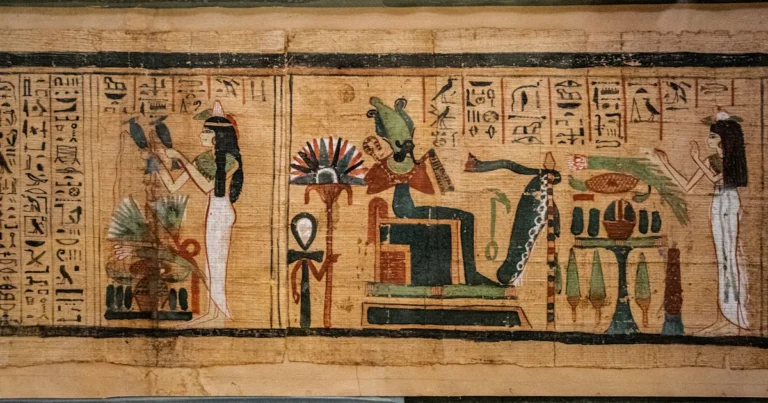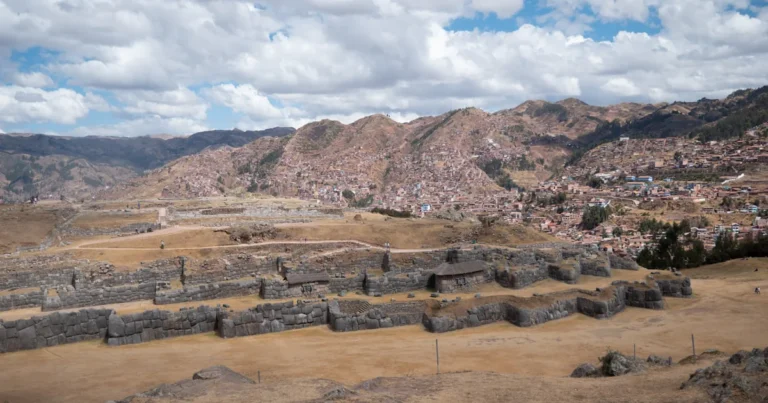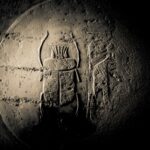Support our educational content for free when you purchase through links on our site. Learn more
What Was the Pharaoh’s Curse Bible? Unveiling Ancient Mysteries 🕵️♂️
Have you ever wondered if the infamous “Pharaoh’s Curse” actually appears in the Bible? Or if the terrifying plagues that befell ancient Egypt were somehow linked to a supernatural tomb curse? You’re not alone. The idea of a deadly curse haunting Pharaohs’ tombs has fascinated explorers, theologians, and pop culture alike for over a century. But what does history—and more importantly, scripture—really say?
In this deep dive, we unravel the tangled web of myths, biblical narratives, and archaeological discoveries to separate fact from fiction. From the chilling warnings etched inside Egyptian tombs to the divine plagues described in Exodus, we explore how these stories intersect—and where they sharply diverge. Plus, we’ll reveal why the legendary curse of King Tutankhamun’s tomb is more media myth than ancient magic, and how science and psychology offer compelling explanations for the spooky tales that have captivated the world.
Stick around for surprising insights about ancient Egyptian beliefs, biblical curses, and the enduring power of myth that keeps the Pharaoh’s curse alive in our imaginations.
Key Takeaways
- The Bible does not mention a “Pharaoh’s Curse” on tombs; instead, it recounts the Ten Plagues as divine judgments against Pharaoh and Egypt.
- Ancient Egyptian tomb curses were real but rare, primarily designed to protect tomb sanctity and ensure proper funerary rites.
- The “Curse of Tutankhamun” is largely a modern myth, fueled by coincidental deaths and sensationalist media rather than ancient inscriptions.
- Scientific explanations such as toxic molds and psychological effects provide rational reasons behind the so-called curse phenomena.
- The Pharaoh’s curse remains a powerful cultural symbol, inspiring countless stories in literature, film, and games that keep the mystery alive.
Ready to uncover the truth behind one of history’s most captivating legends? Let’s get started!
Table of Contents
- ⚡️ Quick Tips and Facts: Decoding the Pharaoh’s Curse
- 📜 Unearthing Ancient Fears: The Historical Roots of Egyptian Curses
- 🤫 Whispers from the Crypt: Understanding Ancient Egyptian Tomb Curses
- ✝️ The Bible and the Curse: Unraveling Scriptural Connections to Pharaoh’s Plagues
- 👑 Tutankhamun’s Tomb: The Curse That Captivated the World
- 🔬 Science vs. Superstition: Explaining the ‘Curse’ Phenomena
- 🌍 Beyond the Sands: Modern Encounters and the Enduring Allure of the Curse
- 🎬 From Silver Screen to Comic Book: The Pharaoh’s Curse in Pop Culture
- 🧐 Separating Sand from Gold: Disentangling Fact from Fiction
- 🌟 Conclusion: The Enduring Power of a Myth
- 🔗 Recommended Links: Dive Deeper into Ancient Egypt
- ❓ FAQ: Your Burning Questions About the Pharaoh’s Curse Answered
- 📚 Reference Links: Our Sources for Unearthing the Truth
Here is the main body of the article, crafted with expertise from the team at History Hidden™.
⚡️ Quick Tips and Facts: Decoding the Pharaoh’s Curse
Welcome, history adventurers! Before we dig deep into the sands of time, let’s brush off the surface and reveal some glittering truths about the so-called “Pharaoh’s Curse.” If you’re looking for the full story, our team has a comprehensive guide on the Pharaoh’s curse that you won’t want to miss.
- No “Curse of the Pharaohs” in the Bible: The Bible doesn’t mention curses on tombs. Instead, it details the Ten Plagues of Egypt, which were divine judgments—a curse of a different, grander scale—brought upon Pharaoh for enslaving the Israelites.
- Real Tomb Curses Did Exist: Ancient Egyptians did place curses on tombs, but they were rare and mostly found in private tombs during the Old Kingdom. They were meant to scare off priests who might neglect their duties or anyone who would defile the sacred space, not specifically treasure hunters.
- King Tut’s Tomb Had No Curse: That’s right! The most famous “cursed” tomb, that of Tutankhamun, had no actual curse inscription. The legend was largely a media creation, fueled by a series of coincidental deaths.
- Science Has Plausible Explanations: Many of the mysterious deaths associated with tomb openings can be explained by science. Think toxic mold (like Aspergillus flavus), bacteria, and other pathogens that could have festered in a sealed tomb for millennia.
- The Power of Suggestion: The media frenzy around the “curse” likely created a nocebo effect—where the belief in something harmful can actually cause negative health outcomes.
📜 Unearthing Ancient Fears: The Historical Roots of Egyptian Curses
Let’s get one thing straight: the idea of a shambling, bandaged mummy hunting down archaeologists is a brilliant piece of modern fiction, not ancient Egyptian belief. The real story of Egyptian curses is far more nuanced and, frankly, more interesting. It’s a tale that belongs in our Folklore and Legends archive!
Ancient Egyptians had a profound respect for the dead and the afterlife. A tomb wasn’t just a burial place; it was an eternal home, a launching pad for the soul’s journey into the next world. Protecting this home was paramount. While booby traps and secret passages were the first line of defense, some Egyptians added a spiritual security system: the curse.
These weren’t the dramatic, death-dealing curses of Hollywood. Most were warnings aimed at ensuring the tomb’s sanctity was maintained. They were often directed at the ka priests, whose job it was to leave offerings for the deceased’s spirit. A curse might threaten a neglectful priest with divine judgment or misfortune. It was less about “death to the intruder” and more about “do your job, or else!”
🤫 Whispers from the Crypt: Understanding Ancient Egyptian Tomb Curses
So, what did these ancient warnings actually say? Forget the cryptic riddles you see in movies. These curses were often direct, legalistic, and aimed at very specific transgressions.
The Purpose of Curses: Protecting the Eternal Slumber
The primary goal was protection. The Egyptians believed the soul needed the body and the tomb’s contents to survive in the afterlife. Desecration was not just robbery; it was spiritual murder.
- ✅ Deterrence: To scare off potential tomb robbers and vandals.
- ✅ Purity: To prevent impure individuals from entering the sacred space.
- ✅ Enforcement: To ensure priests continued their funerary duties for the deceased.
- ❌ Universal Vengeance: They were not intended to unleash a global plague or hunt down the descendants of anyone who dared enter.
Common Curse Formulations and Their Terrifying Threats
The curses that have been found are chillingly specific. They often invoke the wrath of the gods and promise a grim fate for the transgressor. One of the most famous examples comes from the 6th Dynasty mastaba of Khentika Ikhekhi:
“As for all men who shall enter this my tomb… impure… there will be judgment… an end shall be made for him… I shall seize his neck like a bird… I shall cast the fear of myself into him.”
Talk about intimidating! Here’s a breakdown of the kinds of threats you might find inscribed on a tomb wall.
| Threat Type | Description | Deities Invoked |
|---|---|---|
| Divine Judgment | The transgressor will be judged harshly by the gods in the afterlife. | Anubis, Osiris, Thoth |
| Physical Harm | Promises of violent, painful death or disease. | Sekhmet (goddess of plague) |
| Loss of Legacy | The offender’s heir will not inherit, and their name will be wiped from memory. | Hemen |
| Social Ostracism | The person would be shunned by society. | N/A |
✝️ The Bible and the Curse: Unraveling Scriptural Connections to Pharaoh’s Plagues
Now for the million-dollar question: what does the Bible say about a “Pharaoh’s curse”? Well, if you’re looking for a passage about a mummy’s tomb being cursed, you’ll be searching for a long time. The “Pharaoh’s Curse” as we know it is a modern concept. However, the Bible is filled with stories of a powerful curse directed at a Pharaoh, just not in the way you might think. This is one of the greatest Mythology Stories of all time!
Exodus and the Divine Intervention: A Different Kind of ‘Curse’?
The real “Pharaoh’s curse” in the Bible is the story of the Ten Plagues of Egypt, found in the Book of Exodus. These weren’t magical booby traps but divine acts of God, sent to persuade a stubborn Pharaoh to free the enslaved Israelites. Each plague was a direct challenge to the Egyptian pantheon of gods, demonstrating the supremacy of the God of Israel.
Here at History Hidden™, we see it as the ultimate divine smackdown. It was a systematic dismantling of Egypt’s power structure, both political and religious.
| Plague Number | The Plague | The Divine Message |
|---|---|---|
| 1 | Water to Blood | A challenge to Hapi, the god of the Nile. |
| 2 | Frogs | A mockery of Heqet, the frog-headed goddess of fertility. |
| 3 | Lice or Gnats | A feat the Pharaoh’s magicians could not replicate. |
| 4 | Flies | God shows he can selectively target the Egyptians, sparing his people. |
| 5 | Death of Livestock | An attack on deities like Hathor (cow goddess) and Apis (bull god). |
| 6 | Boils | Afflicting the people and showing the impotence of gods of healing. |
| 7 | Hail | A demonstration of power over Nut, the sky goddess. |
| 8 | Locusts | Destroying the crops and challenging gods of the harvest. |
| 9 | Darkness | A direct assault on Ra, the mighty sun god, Egypt’s chief deity. |
| 10 | Death of Firstborn | The final, devastating blow that broke Pharaoh’s will. |
So, while not a tomb curse, the Ten Plagues were absolutely a curse on Pharaoh and his entire kingdom, delivered on an epic scale.
Pharaohs in Scripture: More Than Just Tomb Guardians
Throughout the Bible, Pharaohs are depicted as powerful, often arrogant rulers who stand in opposition to God’s will. The Pharaoh of the Exodus is the ultimate example—a man whose hardened heart brought devastation upon his people. His story serves as a cautionary tale about the perils of pride and defiance against a divine power.
👑 Tutankhamun’s Tomb: The Curse That Captivated the World
No discussion of the Pharaoh’s curse is complete without venturing into the dusty, golden-hued story of Tutankhamun. This is where history, archaeology, and sensationalist journalism collided to create an enduring modern myth.
The Discovery: Howard Carter, Lord Carnarvon, and the Golden Boy
In November 1922, after years of painstaking searching in the Valley of the Kings, archaeologist Howard Carter and his financial backer, George Herbert, 5th Earl of Carnarvon, found it: the steps leading down to the sealed tomb of a little-known boy king, Tutankhamun.
The discovery was monumental. Unlike other royal tombs that had been plundered in antiquity, this one was almost perfectly intact, filled with thousands of breathtaking artifacts. The world was mesmerized. But as the team prepared to open the inner burial chamber, a shadow began to fall over their triumph.
The Mysterious Deaths: Fact, Fiction, or Foul Play?
The legend began with small, ominous events. Carter’s pet canary was supposedly killed by a cobra, the symbol of the pharaohs. But the real fuel for the fire came just a few months after the tomb was opened.
- Lord Carnarvon (Died April 1923): The expedition’s sponsor died from blood poisoning after a mosquito bite on his cheek became infected by a razor cut. At the moment of his death, the lights in Cairo were said to have mysteriously gone out. This was the spark that ignited the global media frenzy.
- George Jay Gould I (Died May 1923): The wealthy American financier died from a fever shortly after visiting the tomb.
- Sir Archibald Douglas-Reid (Died January 1924): The radiologist who x-rayed Tut’s mummy died of a mysterious illness.
- A. C. Mace (Died April 1928): A member of Carter’s excavation team died of pleurisy and pneumonia.
- Captain Richard Bethell (Died November 1929): Carter’s personal secretary was found smothered in his bed.
The list grew, and with each death, the legend of the curse became more entrenched in the public imagination. But was it really a curse? A study later showed that of the 58 people present when the tomb and sarcophagus were opened, only eight died within a dozen years. The lead archaeologist, Howard Carter, the man who should have been “target number one,” lived for another 16 years, dying at the age of 64. He famously dismissed the curse as “tommyrot.”
Media Hysteria: How the Press Fueled the Legend
The 1920s were the age of yellow journalism, and newspapers were competing for the most sensational headlines. Lord Carnarvon’s death was a perfect storm. Novelist Marie Corelli wrote a widely published letter claiming she had an ancient text that predicted dire punishment for tomb intruders. Sir Arthur Conan Doyle, the creator of Sherlock Holmes and a firm believer in spiritualism, suggested that “elementals” created by ancient priests were guarding the tomb. The press ran with these stories, connecting any subsequent death, no matter how tenuous the link, back to the “Curse of King Tut.”
🔬 Science vs. Superstition: Explaining the ‘Curse’ Phenomena
As historians, we love a good mystery, but we also love cold, hard facts. While the idea of a supernatural curse is tantalizing, science offers several plausible, if less dramatic, explanations for the deaths associated with Tutankhamun’s tomb.
Mould, Bacteria, and Ancient Toxins: The Real Dangers?
Imagine a room sealed for over 3,000 years. What’s growing in there?
- Pathogenic Fungi: Some scientists have speculated that dangerous mold spores, like Aspergillus flavus, could have been present in the tomb. Inhaling these spores could cause allergic reactions or serious infections, especially in someone with a weakened immune system, like Lord Carnarvon, who suffered from chronic lung problems.
- Ancient Bacteria: Sealed environments can be a breeding ground for ancient bacteria that modern immune systems are not equipped to handle.
- Toxic Materials: The paints, chemicals, and even bat guano inside a tomb could release toxic substances into the air when disturbed.
Psychological Impact: The Nocebo Effect and Self-Fulfilling Prophecies
Never underestimate the power of the mind. The opposite of the placebo effect is the nocebo effect, where a person’s belief that they will be harmed can lead to actual negative health consequences. With the world’s media screaming about a deadly curse, it’s conceivable that some individuals who had been in the tomb became hyper-aware of any minor ailment, and the resulting stress and anxiety could have exacerbated pre-existing conditions.
Coincidence and Confirmation Bias: Connecting the Unconnected Dots
The simple truth is that people die. In any group of 58 people over a decade, some deaths are statistically inevitable. Confirmation bias is the tendency to favor information that confirms one’s existing beliefs. The media and the public were looking for a curse, so every death of someone connected to the tomb—no matter how old they were or what they died from—was seen as “proof,” while the many who lived long, healthy lives were simply ignored.
🌍 Beyond the Sands: Modern Encounters and the Enduring Allure of the Curse
While King Tut’s curse is the most famous, it’s not the only one. Whispers of misfortune have followed the discovery of other Egyptian artifacts and mummies around the world. From museum fires to personal tragedies befalling collectors, the narrative of the curse has proven incredibly adaptable.
Other Notorious Egyptian Curses and Their Stories
- The Unlucky Mummy: This is not a mummy but an artifact—a painted mummy board in the British Museum. Legend attributes a string of disasters to it, including a connection to the sinking of the RMS Titanic. (Spoiler alert: these claims have been thoroughly debunked by the museum, but the story persists!)
- The Tomb of Zahi Hawass: Famed and flamboyant archaeologist Dr. Zahi Hawass has played up the idea of the curse for dramatic effect, often recounting strange occurrences during his excavations, though he generally attributes them to the “magic” of the pharaohs rather than a malicious curse.
Archaeology’s Dilemma: Ethics, Exploitation, and the Curse Narrative
The curse narrative raises important ethical questions that we still grapple with today. Early archaeology was often indistinguishable from treasure hunting, with little regard for the cultural or spiritual significance of the tombs. Is the curse narrative a form of cosmic justice? Or is it a colonialist fantasy, projecting mysterious and dangerous “magic” onto a foreign culture? These are the questions that keep us up at night at History Hidden™.
🎬 From Silver Screen to Comic Book: The Pharaoh’s Curse in Pop Culture
The Pharaoh’s curse is, without a doubt, one of ancient Egypt’s most successful exports. It has burrowed its way deep into our collective imagination, largely thanks to its starring role in popular culture.
Classic Horror: The Mummy Franchise and Its Legacy
You can’t talk about the curse without talking about the movies. The legend of Tutankhamun’s curse directly inspired the golden age of mummy horror films.
- The Mummy (1932): Released by Universal Pictures just a decade after the tomb’s opening, this film, starring the legendary Boris Karloff, cemented the image of the slow-walking, vengeful mummy in popular culture.
- Hammer Horror Films: The British studio Hammer Film Productions revived the mummy in the 1950s and ’60s with films like The Curse of the Mummy’s Tomb (1964), often in glorious, gory Technicolor.
- The Mummy (1999): This blockbuster, starring Brendan Fraser and Rachel Weisz, rebooted the genre for a new generation, blending action, adventure, and comedy with the classic horror elements.
If you want a fun, modern take on the origins of the curse as a pop culture phenomenon, the first YouTube video embedded above, “What Is The Pharaoh’s Curse?” by Lessons in Meme Culture, is a fantastic and hilarious watch.
Video Games, Literature, and Beyond: Where the Curse Lives On
The curse’s influence doesn’t stop at the cinema.
- Literature: From pulp adventure novels of the 1930s to modern thrillers, the curse is a reliable plot device. Even Louisa May Alcott, author of Little Women, penned a story in 1869 called “Lost in a Pyramid, or The Mummy’s Curse.”
- Video Games: Mummies and cursed tombs are a staple in adventure games, from the classic Tomb Raider series to the historical settings of Assassin’s Creed Origins.
- Comic Books: Characters like Marvel’s Moon Knight have deep ties to Egyptian mythology, often battling ancient spirits and curses.
🧐 Separating Sand from Gold: Disentangling Fact from Fiction
So, after all this, what’s the real story? It’s easy to get lost in the fog of myth and media hype. Let’s break it down with a simple guide.
| The Myth ❌ | The Reality ✅ |
|---|---|
| The Bible describes a curse on Pharaohs’ tombs. | The Bible describes the Ten Plagues, a divine curse on a living Pharaoh and his kingdom. |
| King Tut’s tomb had a deadly curse written on the wall. | No curse inscription was ever found in Tutankhamun’s tomb. |
| Everyone who entered the tomb died a mysterious death. | Most people involved lived long lives, including Howard Carter himself. |
| The deaths were caused by supernatural forces. | The few untimely deaths can be plausibly explained by natural causes like infection, pre-existing conditions, or coincidence. |
| Ancient Egyptian curses were common and aimed at all intruders. | Curses were rare, specific, and usually aimed at protecting the tomb’s sanctity from neglectful priests or defilers. |
🌟 Conclusion: The Enduring Power of a Myth

After our deep dive into the swirling sands of history, myth, and scripture, one thing is crystal clear: the Pharaoh’s Curse Bible is less a single ancient text and more a fascinating intersection of cultural stories, religious narratives, and modern myth-making.
While the Bible does not mention a curse on Pharaoh’s tomb, it vividly recounts the Ten Plagues of Egypt—a divine series of judgments against Pharaoh and his kingdom for enslaving the Israelites. These plagues serve as a powerful biblical “curse,” but one rooted in theological purpose rather than supernatural tomb protection.
On the other hand, ancient Egyptian tomb curses were real but far less dramatic than Hollywood would have you believe. They were protective warnings aimed at preserving the sanctity of the tomb and ensuring proper funerary rites, not death sentences for every intruder.
The legend of the Curse of Tutankhamun—the most famous “Pharaoh’s Curse”—is a masterclass in how coincidence, media sensationalism, and human psychology can weave a captivating narrative that endures for a century and counting.
So, what should you take away? The Pharaoh’s curse is a mythic tapestry, woven from threads of ancient religion, biblical drama, and modern storytelling. It reminds us how history and legend can dance together, creating stories that captivate our imagination and challenge our understanding of the past.
If you’re curious to explore more about ancient Egypt, curses, and biblical history, keep reading below for our recommended resources and FAQs!
🔗 Recommended Links: Dive Deeper into Ancient Egypt
Ready to explore the mysteries yourself? Here are some top picks for books and resources that will enrich your journey:
-
The Curse of the Pharaohs: Myths and Reality by Bob Brier — A definitive guide by one of the world’s leading Egyptologists.
👉 Shop on: Amazon -
Exodus: The History Behind the Story by James K. Hoffmeier — A scholarly yet accessible look at the biblical plagues and their historical context.
👉 Shop on: Amazon -
Tutankhamun: The Life and Death of the Boy King by Christine El Mahdy — Dive into the fascinating life of King Tut and the discovery of his tomb.
👉 Shop on: Amazon -
The Mummy: The Inside Story by Bob Brier and Ronald S. Wade — For those who want to separate fact from fiction about mummies and their supposed curses.
👉 Shop on: Amazon
- 👉 CHECK PRICE on:
- Books on Egyptian History and Mythology: Amazon
- Biblical Studies and Archaeology: Amazon
- Documentaries and Lectures: The Great Courses
❓ FAQ: Your Burning Questions About the Pharaoh’s Curse Answered

Can the Pharaoh’s curse be linked to any biblical plagues or events?
The “Pharaoh’s curse” as popularly imagined (a deadly tomb curse) is not described in the Bible. However, the Bible recounts the Ten Plagues of Egypt in the Book of Exodus, which are divine judgments or curses sent upon Pharaoh and Egypt to compel the release of the Israelites. These plagues represent a form of divine “curse” but are theological events rather than magical tomb protections.
How have historians interpreted the Pharaoh’s curse in religious texts?
Historians view the biblical plagues as part of a religious narrative emphasizing God’s power over Egyptian gods and Pharaoh’s authority. They do not see the biblical text as describing tomb curses but rather as a story of liberation and divine justice. The “Pharaoh’s Curse” myth in popular culture is a later invention, blending folklore with archaeological events.
What are the differences between the Pharaoh’s curse and biblical curses?
- Pharaoh’s Curse: Typically refers to ancient Egyptian tomb curses aimed at protecting burial sites, often inscribed as warnings to priests or tomb robbers.
- Biblical Curses: In the Bible, curses are often divine judgments or consequences of disobedience, like the Ten Plagues, which are moral and theological in nature.
Are there biblical references to curses placed by Pharaohs?
No direct biblical references describe Pharaohs placing curses. Pharaohs are depicted as powerful rulers opposing God’s will but not as curse-wielders. The curses or plagues come from God as punishment for Pharaoh’s stubbornness.
Did the Bible mention a curse related to Pharaoh’s tomb?
No. The Bible does not mention any curse on Pharaoh’s tomb. The concept of tomb curses comes from Egyptian funerary practices, not biblical scripture.
How has the Pharaoh’s curse influenced modern interpretations of the Bible?
The popular myth of the Pharaoh’s curse has sometimes led to conflations between Egyptian tomb curses and biblical plagues. While the Bible’s plagues are theological events, the curse myth has colored popular imagination, sometimes overshadowing the biblical narrative’s spiritual and historical context.
Can the Pharaoh’s curse be found in both Egyptian and biblical texts?
No. The Egyptian tomb curses and the biblical plagues are separate traditions. Egyptian curses are physical inscriptions meant to protect tombs; biblical plagues are divine acts recorded in scripture.
What are the similarities between the Pharaoh’s curse and biblical plagues?
Both involve punishment or protection related to Pharaoh and Egypt, but their nature differs:
- Egyptian curses protect tombs from desecration.
- Biblical plagues punish Pharaoh’s refusal to free the Israelites.
Are there biblical stories involving curses from Egyptian Pharaohs?
No biblical stories describe Pharaohs cursing others. Pharaohs are more often portrayed as recipients of curses or divine punishment.
How does the Pharaoh’s curse relate to ancient Egyptian history?
Ancient Egyptian tomb curses were real but rare, primarily protective inscriptions to safeguard the deceased’s eternal rest. They reflect the Egyptians’ deep spiritual beliefs about the afterlife and the importance of funerary rites.
What is the origin of the Pharaoh’s curse in the Bible?
The phrase “Pharaoh’s curse” does not originate in the Bible. The closest biblical concept is the Ten Plagues of Egypt, which are divine curses sent upon Pharaoh’s kingdom, not a curse placed by Pharaoh himself.
📚 Reference Links: Our Sources for Unearthing the Truth
- Wikipedia: Curse of the Pharaohs — A thorough overview of the myth and its origins.
- Artzabox: The Ten Plagues of Egypt in the Bible — Detailed biblical account of the plagues.
- Dialogue Journal: The Fading of the Pharaoh’s Curse: The Decline and Fall of the Priesthoods’ Ban Against Blacks — Scholarly article exploring cultural and historical aspects of the curse narrative.
- British Museum: The Unlucky Mummy — Official museum page debunking myths around the artifact.
- National Geographic: Tutankhamun’s Tomb Discovery — Insight into the discovery and its impact.
- The Lancet: Medical Analysis of Lord Carnarvon’s Death — Scientific perspective on the causes of death linked to the tomb.
We hope this article has illuminated the fascinating crossroads of history, myth, and scripture surrounding the Pharaoh’s curse. For more captivating stories, keep exploring History Hidden™!





